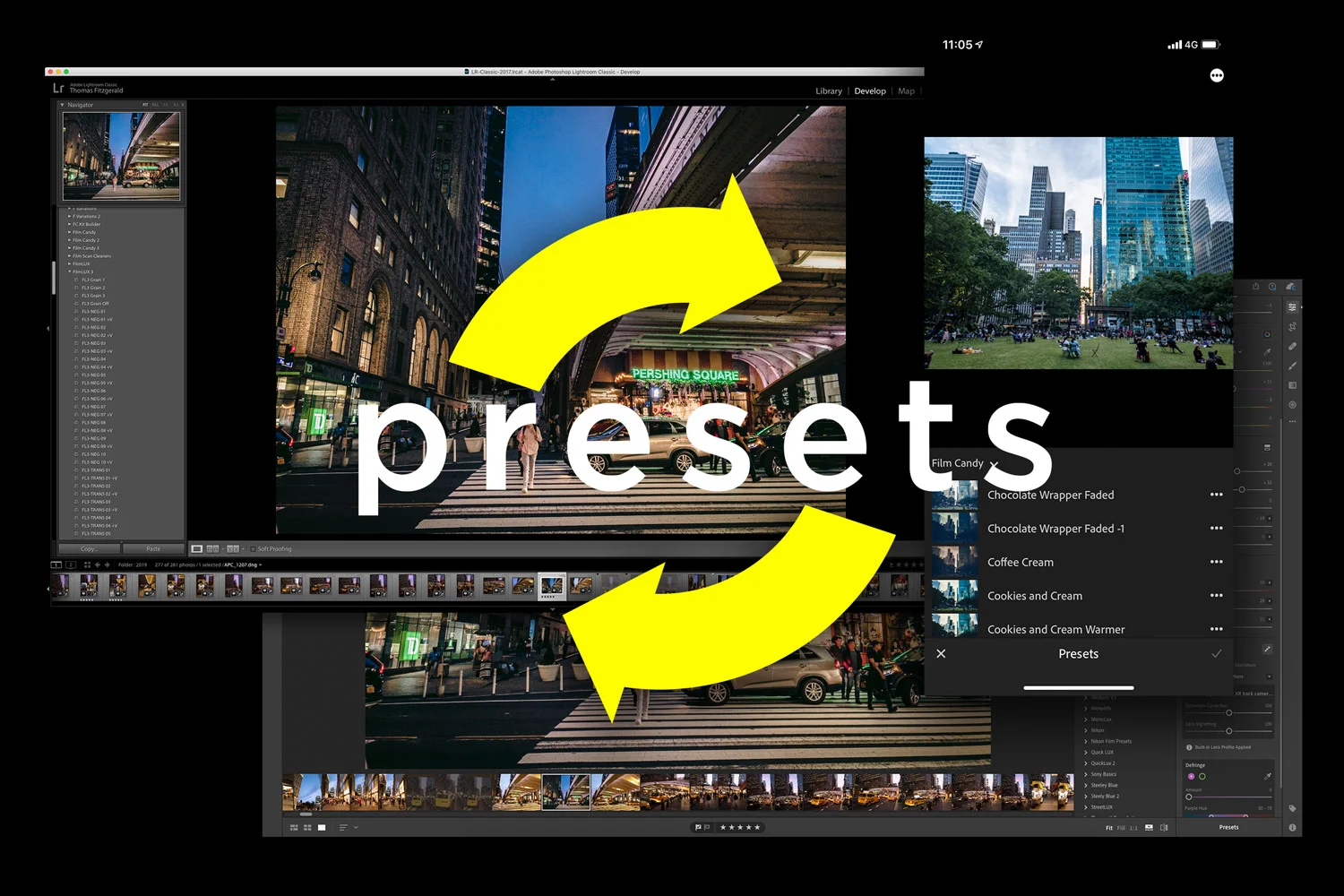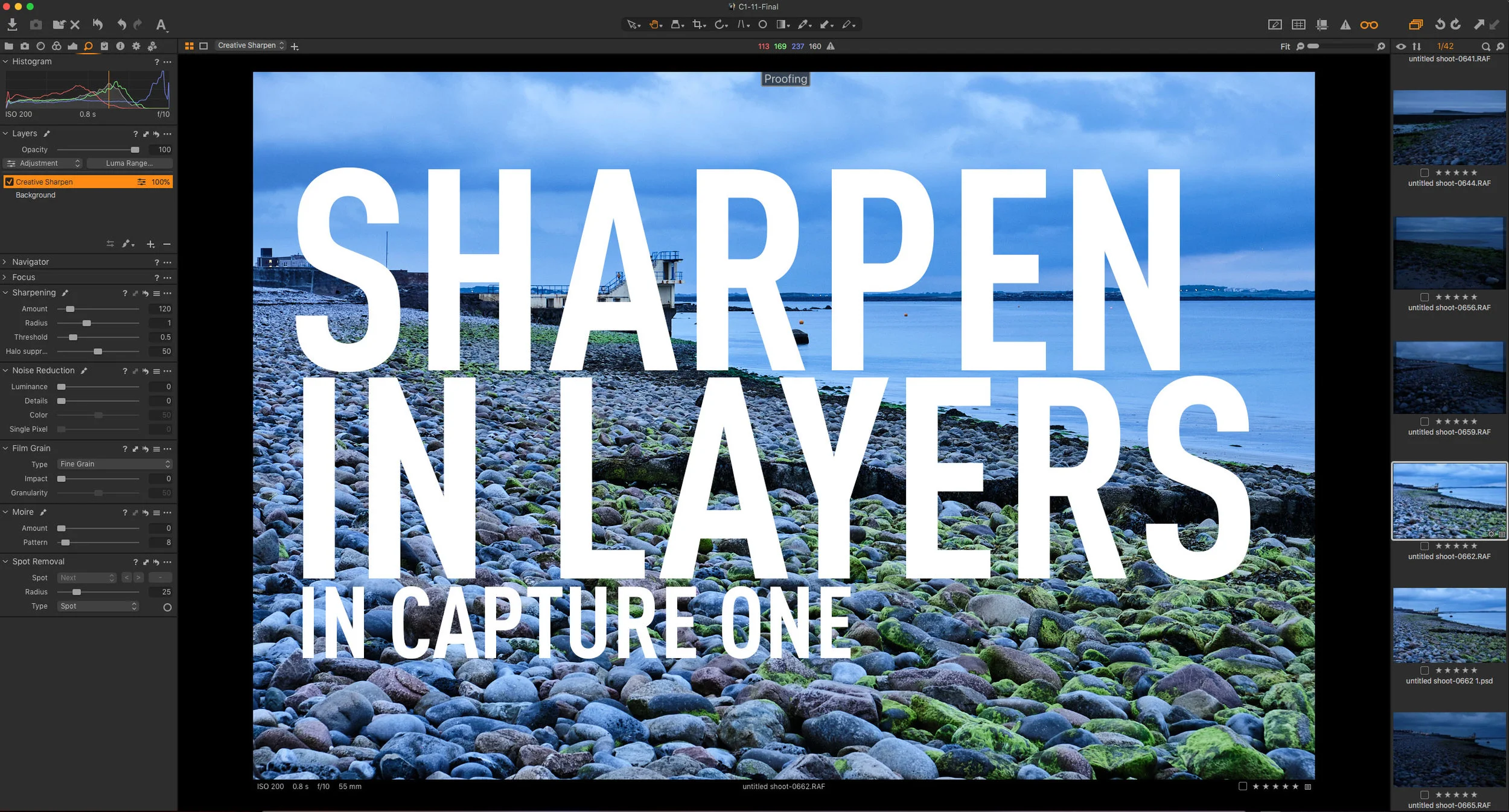I’m having a summer sale on all of my Lightroom Presets and on my Capture One styles. There’s up to between 20% and 50% off on various presets and styles. I’ve been running this through July, and now it will continue until the end of August. If you’re looking for some great Capture One Styles or Lightroom Presets, here’s a chance to get them at a good discount.
Use Layers to Apply Noise Reduction to the Shadows in Capture One
No matter how good your camera is, or how good your technique is, there are times when you will want to reduce the noise in an image. In many cases the noise reduction in your chosen raw processing software will be enough, but using noise reduction is often a trade off between maintaining detail and suppressing noise in an image.
Why You Should Use a Histogram with an EVF on a Mirrorless Camera
I’ve seen a few posts lately complaining about new mirrorless cameras not exposing properly compared to what the user is seeing in the EVF. It seems that in a few instances, people are judging exposure purely by what they’re seeing in the viewfinder. Even if you are also using the included light meter, you may still see a different result when looking at images later on your computer. I call this the EVF effect, and if you’re shooting mirrorless, it’s something you need to be aware of.
Video: The best way to use Luminar Flex with Lightroom
I wrote a post a while ago about what I felt was the best way to use Luminar Flex with Lightroom. In that post I explained that I use a bit of a roundabout method, by sending the image to Photoshop first. By doing this and using smart objects, you can keep your edits non destructive, so that you can go back and change your image without having to start over. Here is a video version of this tutorial.
Why I Recommend Capture One for Fuji Shooters
For photographers shooting with Fuji cameras, getting the best from your camera’s RAW files can sometimes seem like a challenge, especially if you’ve been mostly using Lightroom. Because of the way Lightroom converts Fuji RAW files, there can often be smearing of fine detail, leading to a water colour effect, as well as issues with strange “worm” like artifacting in areas of solid colour. While not everyone is bothered by these issues, for many, it is a reason to consider other methods of converting RAW files.
For me, the best current option is Capture One and this is why…
(This is an edited excerpt from my new Capture One Fuji Guide)
Two ways to Darken Shadows in Capture One
If you’ve switched from Lightroom to Capture One, one of the things that you may have noticed is different, is the way that Shadows and Highlights work. In Lightroom, you can drag the sliders either way for a positive or negative adjustment. In Capture One, they only go one way. Does this mean there is no way to negatively adjust shadows? No, there is actually a few different ways. Read on for how to do it …
The Quick Way to get your Lightroom Presets from Lightroom Classic to Lightroom Mobile
For the longest time I wasn’t a huge user of Lightroom mobile, but that all changed when I upgraded to the iPhone XR and I started using Lightroom’s camera more and more. Now I use Lightroom mobile a lot more than I used to. Having access to your presets on the software can really help your workflow, but if you primarily use Lightroom Classic on the desktop, they won’t be synced automatically so un this post I’m going to show you a quick way to get your presets across, without too much fuss.
Testing out Reviews on the Store
I’m currently running a trial to test the idea of enabling review on my store. The reason I haven’t done this in the past is that it is a bit risky, with a small store like mine. However, for the next month I’m trialing it on a select few products to see if it works, and if it does, they will stay on, and if not, I’ll turn the review system back off again.
Capture One Terminology Basics for Lightroom Switchers
One of the things I most often hear from people switching from Lightroom to Capture One, is that they find the interface confusing or that there is a steep learning curve. The interface in Capture One is different to Lightroom, of that there is no doubt, but once you get the hang of it you will realise it’s actually not massively different. In this post, I’m going to discuss some of the Capture One terminology and where relevant, how it compares to its Lightroom counterparts.
My X-Transformer Guide Updated
I’ve released a minor update to my X-Transformer guide that addresses some of the recent changes in the application. This is a free update to anyone who had previously bought the guide.
Skylum Previews Luminar 4’s AI Sky Replacement Filter
Skylum software announced the first preview of the upcoming version 4 of Luminar. Specifically they announced the inclusion of a brand new “AI Sky Replacement” filter which will automatically replace skies, including automatically masking out foreground elements and matching colours.
This should be Fuji’s New Kit Lens
If you’ve been following his blog for a while You’ll know that I previously posted about wanting a 24-105 (in full frame terms) equivalent for Fuji for sometime. They previously previewed the 16-80mm lens a while ago and put it in the roadmap, but now they've officially announced the launch date and the full specs of it.
Use Layers to Separate Sharpening Workflows in Capture One
When you are working with RAW files in any software, an important part of the conversion process is sharpening. Sharpening must be done to compensate for the inherent softness that is a part of the raw conversion process. I’ve discussed this before, but there are times when you need to do additional sharpening on top of the RAW level sharpening. While some software separates the RAW sharpening pass, most just have the one set of overall sharpening controls. In Capture One, you can use layers to split your workflow when you need to do more creative sharpening.
Thank You & What’s Next!
I just wanted to say a quick thank you to everyone who purchased my new Capture One guide for Fuji shooters. I was taken by surprise by the demand, and for the first 24 hours I was afraid that my store wouldn’t handle the traffic. So a genuine and heartfelt thanks to everyone who bought a copy.
Sony Pushes the Envelope with the A7RIV
Sony once again demonstrated its technological chops this week releasing a new version of its A7R series. The new model, the A7RIV brings the sensor to an impressive 61megapixels, and the new model also ads improved speed, autofocus and ergonomics. The fact that Sony can fit all this into a pretty small body is even more impressive.
Capture One for Sony Shooters - It’s worth considering for one reason…
I’ve written a good bit about Capture One for Fuji shooters, including a whole book about it, but I think it’s something you should consider if you shoot Sony too. While the advantages aren’t as clear cut as they are for Fuji shooters, given the problems that Lightroom has with details and Fuji RAW files, there is one big benefit for Sony Shooters - the colour is better.
Why is Canon removing 24p from its Low End Camera Lineup?
Last week Canon launched the latest iteration of its popular G7X series of compact cameras. The Mark III looks to be a really great camera for vloggers in particular, adding a microphone input and 4K recording to a camera already popular with the vlogging community. Except for reasons that escape me, Canon has inexplicably removed the ability of the G7X III to record in 24p. This isn't the first time either. Canon seems to be systematically removing 24p from it’s lower end lineup, and I really can’t understand why.
My New Capture One Fuji Guide is now available
I’m happy to announce that I’ve finally finished my new Capture One guide for Fuji shooters. Called “Processing RAW files in Capture One 12” - snappy title, I know! - It is written to provide Fuji shooters with enough knowledge to get the best results when working with Fuji RAW files in Capture One. It’s not a complete manual for Capture One, and while you don’t need to be an advanced user, you need to know the basics.


















